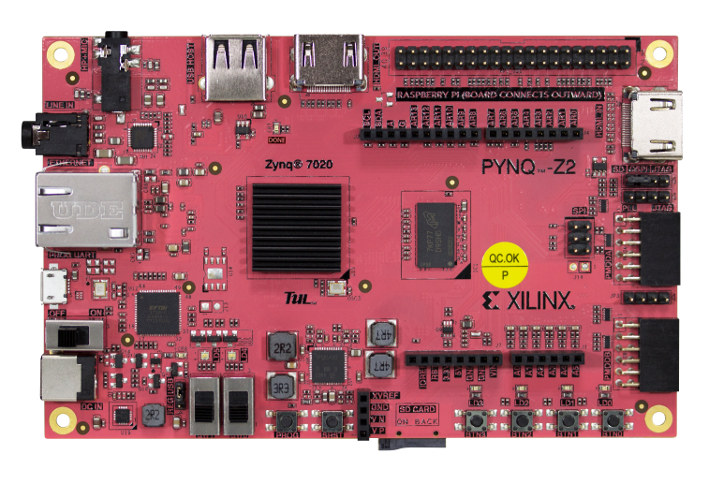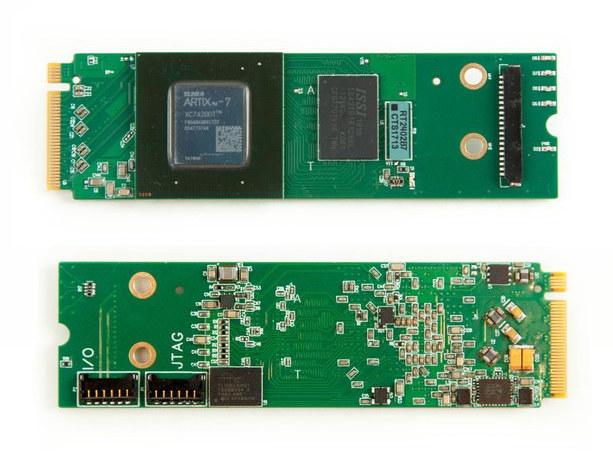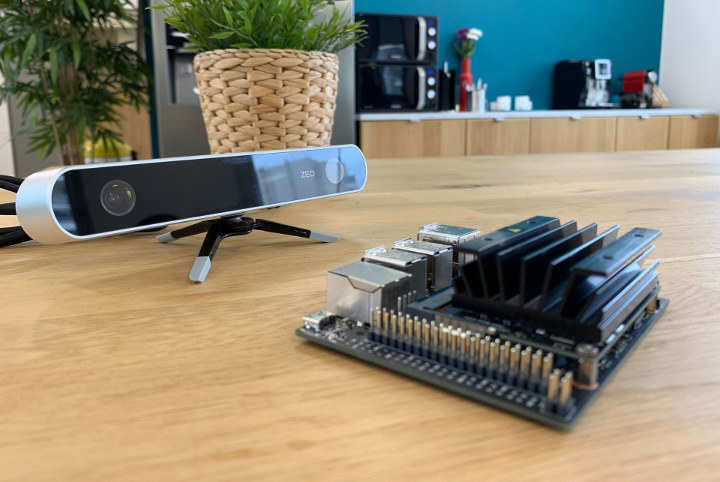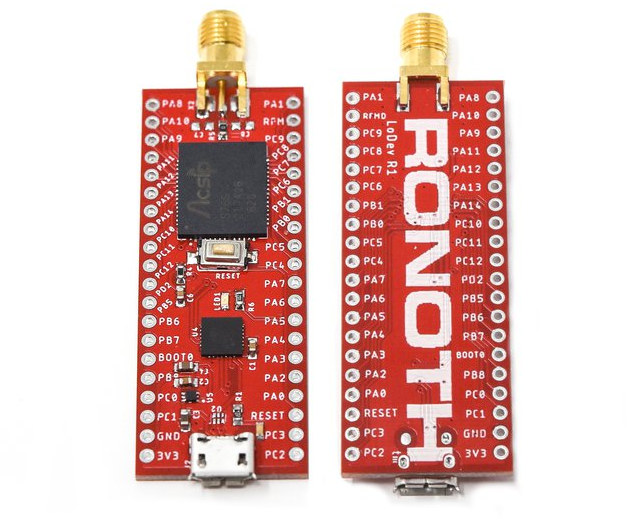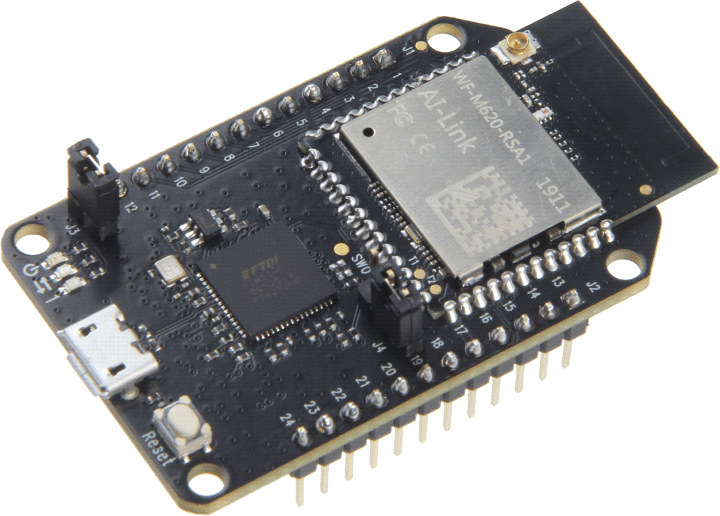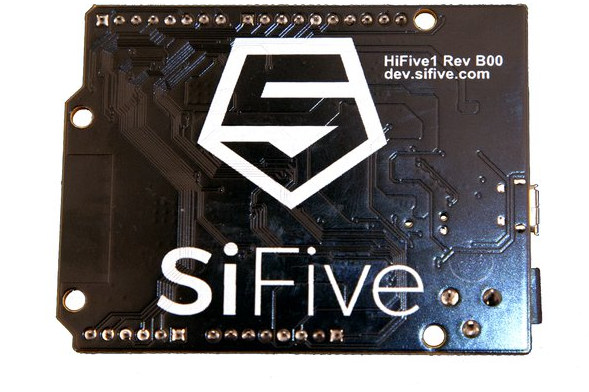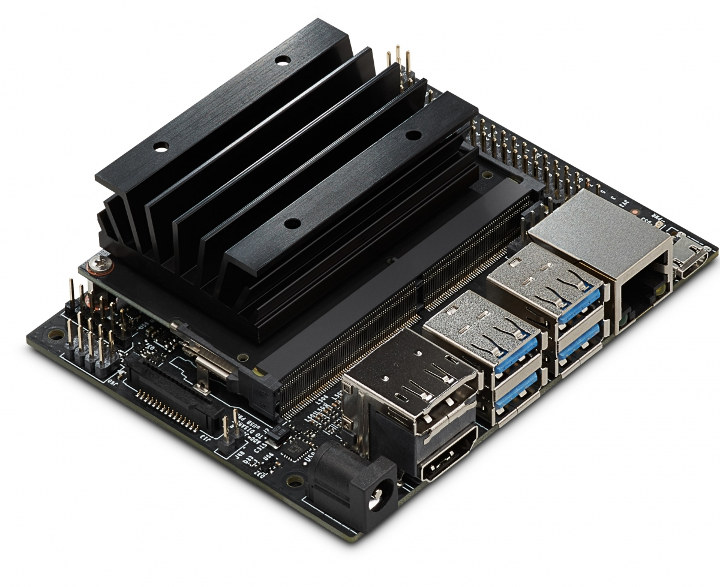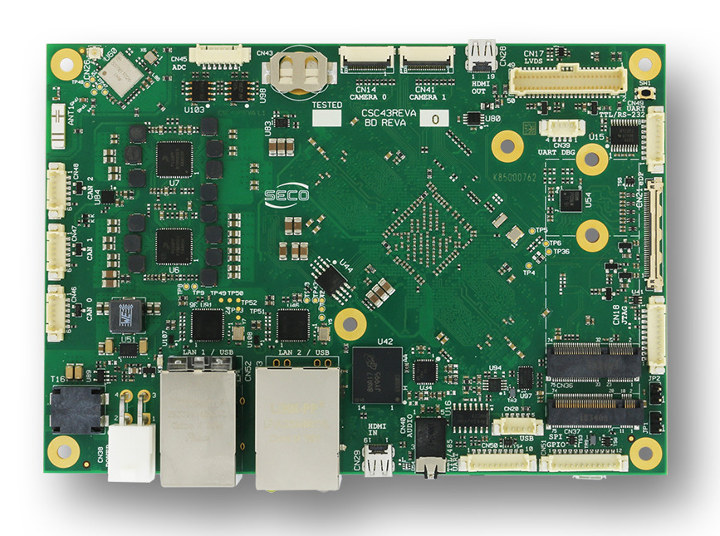PYNQ-Z1 is a board by Digilent powered by Xilinx Zynq-7020 Arm Cortex-A9 + FPGA SoC that’s designed specifically for PYNQ, an open-source project that aims to ease the design of embedded systems with Xilinx Zynq Systems on Chips (SoCs) by leveraging the Python language and libraries. PYNQ-Z2 is very similar to PYNQ-Z1, but it’s made by Taiwanese company TUL, and the board is slightly longer to allow for an extra 40-pin Raspberry Pi compatible header, and Analog Devices ADAU1761 24-bit audio codec. PYNQ-Z2 board specifications: SoC – Xilinx Zynq-7020 (XC7Z020-1CLG400C) dual core Arm Cortex-A9 processor @ 650 MHz with FPGA with 13,300 logic slices, each with four 6-input LUTs and 8 flip-flops System Memory – 512MB DDR3 Storage – Micro SD card slot, 16MB QSPI Flash with factory programmed globally unique identifier (48-bit EUI-48/64 compatible). Video – HDMI In and HDMI Out Audio – Mic in, Line Out ADAU1761 codec […]
NiteFury Puts Xilinx Artix-7 FPGA into an M.2 Card (Crowdfunding)
NiteFury is an FPGA development board, but it works differently than most, as RHS Research LLC put a Xilinx Artix-7 FPGA into an M.2 Key M card that you can easily insert into a laptop or mini PC with a 80mm M.2 socket. The board also includes DDR3 memory, and exposes a few configurable I/Os. You can use NiteFury to experiment with Xilinx PCIe IP, but also as FPGA co-processor for example to handle encryption, and encoding/decoding data. NiteFury card specifications: FPGA – Xilinx Artix XC7A200T-2FBG484E delivering up to ~1000 GMAC/s, with 215,360 Logic cells, 33,650 Slices, 269,200 CLB flip-flops, and 740 DSP slices. System Memory – 8 Gbit DDR3 (512 MB x 16) Host Interface – PCIe 4x gen 2 (2 Gb/s) External I/Os Via I/O connectors – 12x I/O including 4x selectable analog or digital – JTAG ready Via PCIe connector – 1x 3.3 V digital I/O (LED), […]
ZED Depth and Motion Tracking Camera Supports NVIDIA Jetson Nano Board
When NVIDIA launched their low cost Jetson Nano development board earlier this week, one reader asked whether it would support binocular depth mapping. It turns out Stereo Labs has updated the SDK (Software Development Kit) for the ZED depth and motion tracking camera in order to support the latest NVIDIA developer kit. Jetson Nano can manage depth and positional tracking at 30 fps in PERFORMANCE mode with 720p resolution, and while the more powerful and expensive Jetson TX2 achieves doubles the performance at 60 fps, it does so at a much higher cost. ZED depth and motion tracking camera specifications: Video 2.2K @ 15 fps (4416×1242 resolution) 1080p @ 30 fps (3840×1080 resolution) 720p @ 60 fps (2560×720 resolution) WVGA @ 100 fps (1344×376 resolution) Depth Resolution – Same as selected video resolution Range – 0.5 to 20 m Format – 32-bits Stereo Baseline – 120 mm Motion 6-axis Pose […]
LoDev S76S Board Combines STM32, LoRa and Arm Mbed Support (Crowdfunding)
There are already plenty of low power boards with a LoRa radio, but Ronoth offers another option with their tiny LoDev S76S LoRa development board featuring AcSip S76S SiP (system-in-package) with STMicro STM32L073 microcontroller, a Semtech SX1276 LoRa radio, and other components. While most hobbyist LoRa boards are designed to be programmed with the Arduino IDE, LoDev S76S is instead compatible with Arm Mbed. LoDev S76S board specifications: SiP – AcSip S76S system-in-package with STMicro STM32L073 Arm Cortex-M0+ microcontroller @ 48 MHz with 192 kB flash, 20 kB RAM Semtech SX1276 chip supporting global 863MHz ~ 928MHz ISM Bands RF front-end LoRa Connectivity Receiver Sensitivity – down to -146 dBm TX Power – adjustable up to +20 dBm Range – up to 15 km coverage in suburban areas and up to 5 km coverage in urban areas SMA antenna connector USB – 1x micro USB port for programming and power […]
MT3620 Mini Dev Board is a Cheaper Microsoft Azure Sphere Board
Announced nearly one year ago, Microsoft Azure Sphere is an ecosystem comprised of Azure MCUs with Microsoft Pluton Security System, Linux based Azure Sphere OS, and a secure cloud service called Azure Sphere Security Service. The first official Azure development board – MT3620 Development Board for Azure Sphere – was launched last year for $84.95. The kit may not have attracted a large number of developers, so there’s now a cheaper version – MT3620 Mini Dev board – going for $34.90 on Seeed Studio. Note that’s a pre-order and shipping is scheduled for May 13, 2019. MT3620 Mini dev board specifications: CPU Module – AI-Link WF-M620-RSA1 module with Mediatek MT3620AN single core Arm Cortex-A7 processor @ 500 MHz with 4MB SRAM, dual core Arm Cortex-M4F real-time core @ 200 MHz with 64KB RAM, Pluton security sub-system, and WiFi. Storage – 2x 8MB dual channel quad SPI (TBC) Connectivity – Dual band […]
HiFive1 Rev B Board Gets FE310-G002 RISC-V Processor, WiFi & Bluetooth Module
SiFive launched what may have been the very first RISC-V development board in 2016 thanks to their HiFive1 Arduino compatible board powered by Freedom E310 (FE310) open source RISC-V processor. The company has now launched an upgrade version of the processor and board. Meet FE310-G002 processor and HiFive1 Rev B development board. HiFive1 Rev B development board specifications with new features highlighted in bold or stricken-through: MCU – SiFive Freedom E310-G0002 32-bit RV32IMAC processor @ up to 320+ MHz (1.61 DMIPS/MHz) Storage – 32 Mbit SPI flash (was 128 Mbit in the first version) Connectivity – ESP32-SOLO-1 WiFi & Bluetooth module I/Os 19x Digital I/O Pins 19x external interrupt pins 1x external wakeup pin 9x PWM pins 1/3 SPI Controllers/HW CS Pins I/O Voltages – 3.3V or 5V supported; note: bidirectional level shifters removed so FE310-G002 can drive the I/O pins directly at 3.3V only. USB – 1x micro USB […]
NVIDIA Introduces $99 Jetson Nano Developer Kit
NVIDIA Tegra X1 octa-core Arm processor with a 256-core Maxwell GPU was introduced in 2015. The processor powers the popular NVIDIA Shield Android TV box, and is found in Jetson TX1 development board which still costs $500 and is approaching end-of-life. The company has now introduced a much cheaper board with Jetson Nano Developer Kit offered for just $99. It’s not exactly powered by Tegra X1 however, but instead what appears to be a cost-down version of the processor with four Arm Cortex-A57 cores clocked at 1.43 GHz and a 128-core Maxwell GPU. Jetson Nano developer kit specifications: Jetson Nano CPU Module 128-core Maxwell GPU Quad-core Arm A57 processor @ 1.43 GHz System Memory – 4GB 64-bit LPDDR4 @ 25.6 GB/s Storage – microSD card slot (devkit) or 16GB eMMC flash (production) Video Encode – 4K @ 30 | 4x 1080p @ 30 | 9x 720p @ 30 (H.264/H.265) Video […]
Seco SBC-C43 SBC Features NXP i.MX 8 QuadMax Processor, 8GB RAM
When NXP unveiled their first 64-bit i.MX processors in 2016, we had three families: i.MX 8 Cortex-A72/A53 for high performance, i.MX 8M Cortex-A53 for audio/video application, and i.MX 8X Cortex-A53 for low power applications. Most of the designs we’ve seen so far are based on i.MX 8M family, and we’ve seen few hardware platforms based on the top of the line i.MX 8 QuadMax SoC with two Arm Cortex-A72 cores, four Cortex-A53 cores, two Cortex-M4F real-time cores, and two GC7000XS/VX GPUs. We did cover several modules based on i.MX 8 QuadMax processor including Advantech ROM-7720 Qseven 2.1 Computer-on-Module, Toradex Apalis i.MX 8 CoM, and Congatec conga-SMX8 SMARC 2.0 SoM among others, but AFAICR I had yet to see an i.MX 8 QuadMax single board computer. So Seco SBC-C43 appears to be the first SBC powered by NXP’s most powerful i.MX 8 processor, coupled with up to 8GB DDR4, 32GB eMMC […]


